As I grow older I grow more and more annuals. I know this distresses many of my rock gardening friends...but that's too bad. I think that many annuals proffer colors and qualities that aren't matched by perennials. Some self sow and maintain themselves as reliably as perennials.
One that has impressed me enormously this spring is Roemeria refracta, a tiny poppy from the Mediterranean. It is only five or so inches tall and barely 8 inches across. It has been blooming for the better part of two months and shows no sign of stopping. It has multiplied tremendously since I first obtained it a few years ago, and is small enough and delicate enough that it doesn't seem to negatively impact its neighbors. I shall encourage it to spread more widely in my dry garden.

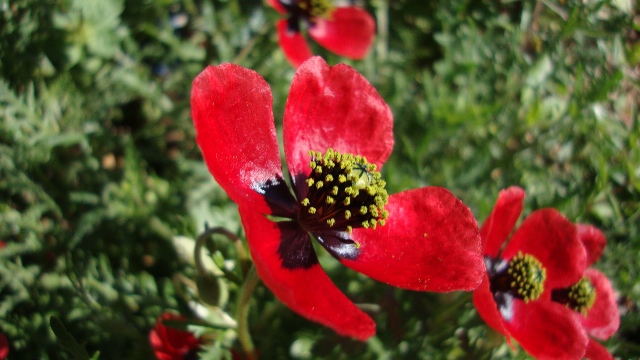
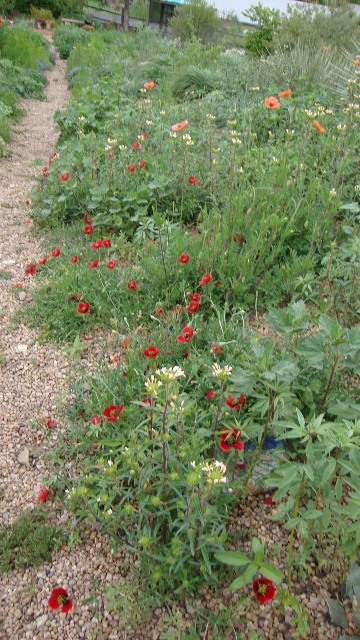
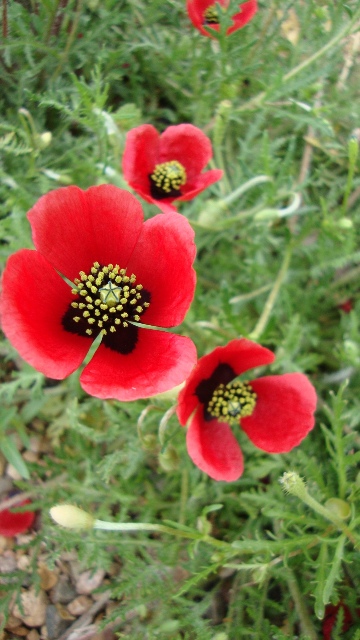
Comments
Trond Hoy
Re: An indispensible annual
Sat, 05/29/2010 - 12:50amVery nice!
I haven't grown this particular annual but I often grow other similar poppies. I would believe that your climate should be ideal for annuals of this kind?
Mary Ann Ulmann
Re: An indispensible annual
Thu, 08/12/2010 - 5:33amMary Ann does annuals too! Many aren't alpines but they are very, very bright. If you went to John and Anita Kistler's gardens in their heydays, it wasn't hard to tell which one was John's..bright colors with annuals. . . John never could turn down a bright red or bright orange no matter what it was!! Chuck
Mark McDonough
Re: An indispensible annual
Thu, 08/12/2010 - 8:38amWelcome to the NARGS Forum Chuck and Mary Ann. I too like a few annuals that "naturalize" in my garden. I'm a fan of Cleome, there are some really good native North American ones, although with recent taxonomic upheaval, most of the North American species are now Polanisia. One of my favorites is Polanisia dodencandra (Cleome marshalliana), with the fun common name of redwhisker clammyweed, native to most of North America. Like all Cleome, they flower indefinitely as they advance up the stem; I find the flowers charming, little upright white "teeth", long red eyelashes, and a bright orange nectariferous ovary. And look at those upright pods!
http://plants.usda.gov/java/profile?symbol=PODO3
Plants can flower as small as 4" tall, but typically grow 1-2' tall, although in good years with lots of rain and if they seed into a richer soil area in sun, they can grow to 4' tall and make impressive plants. All parts of the plant are glandular-sticky, with an acrid scent. The large pea-pod-like seed pods are like maracas or salt shakers when they dry. They pull out very easily and have almost not root, so an easy annual to allow to self seed, for interest through the summer.
Panayoti: I like the idea of having a little red poppy (Roemeria refracta) seeding about, these types of things provide summer color yet still look like natural wildflowers instead of bedding petunias and marigolds. I have a couple other annuals I'll post here.
vanachterberg (not verified)
Re: An indispensible annual
Wed, 09/01/2010 - 9:15amVery nice! I wonder where I can get seed of this.
Barbara van Achterberg
Mark McDonough
Re: An indispensible annual
Wed, 09/01/2010 - 10:21amWhich one Barbara? Roemeria refracta or Polanisia dodencandra?
Mark McDonough
Re: An indispensible annual
Wed, 09/01/2010 - 10:54amOne of my favorite native annuals that self sows around in my garden, a welcome infill for summer dormant alliums and bulbs, is the little Bluecurls, or Trichostema dichotomum. It is native to the eastern half of the USA and Canadian provinces. Now, there's one fellow who sometimes attends our local NARGS chapter meetings who will spin into a rant when he sees this plant at a chapter plant sale, claiming it to be one of the worst weeds possible and chiding the irresponsible member for donating such rubbish. However, I find Bluecurls to be a thoroughly pleasant little annual that is easily controlled, never getting out of hand in the nearly two decades I've had it in the garden. In fact, in late fall I pull up the dried plants and shake out the seeds to ensure some new plants appear the following year.
The common name of Bluecurls is an apt one, describing the long exserted stamens that curl downwards, adding a cute factor to the small bright blue flowers. Plants don't get overly large (although listed as being able to reach 30"), for me they grow as compact little bushy plants rarely over a foot tall, usually less, the plants well branched, bearing simple leaves and a fresh batch of perky blue flowers every morning, the blooms dropping by mid to late afternoon. All parts of the plant are sticky and give off a strong resinous aroma when brushed, which I rather like. Does great even in very dry or drought conditions. Also valuable, is the late flowering from August - October.
This annual plant gives the impression of being a wild plant, it even has a perennial look to it, so it fits well and looks natural in rock garden.
http://plants.usda.gov/java/profile?symbol=TRDI2&photoID=trdi2_004_avp.jpg
Margaret Young
Re: An indispensible annual
Wed, 09/01/2010 - 11:29amThat is a pretty, cheerful plant, Mark. Even if it were to prove weedy, I think I'd forgive it, being so brightly blue..... there are MUCH worse weeds, and perennial ones at that :o so I would agree with you to be rather tolerant of the cute thing!
Trond Hoy
Re: An indispensible annual
Wed, 09/01/2010 - 12:15pmBluecurls (that's blåkrøller in Norw.) seems to be a loveable plant I would like to try at my cabin. If you ever get too much seed, Mark!
Mark McDonough
Re: An indispensible annual
Wed, 09/01/2010 - 2:45pmIs Bluecurls a different genus in Norway? There are other genera that have these curled stamens and styles. I was googling, and it seems there is considerable variability among Trichostema dichotomum, depending on where it is found geographically. I would have to say, the ones I'm growing are a particularly good looking form, and compact growing. I'll save some seed this year. There are also some intriguing western American Trichostema species, some being perennial shrubs, I'll gather up some links later. But I'll start with this link, to T. lanatum at Las Pilatas Nursery, a handsome evergreen shrub (must be perennial) looking something like one of the better Salvia species.
http://www.laspilitas.com/nature-of-california/plants/trichostema-lanatum
Richard T. Rodich
Re: An indispensible annual
Wed, 09/01/2010 - 6:13pmYou can put me on your hopeful seed list for Blue Curls too, Mark. Those stamens are unusual. (I love weird.)
Here is another useful annual: Nigella hispanica. In good conditions it will grow 2ft+. But in the more austere, it's very dwarf, flowering as short as 6 inches. Like other nigellas, it has interesting seed pods, different from the more common N. damascena (Love in the Mist). Here it is with Melica ciliata, which is whiter than the pic shows.
Trond Hoy
Re: An indispensible annual
Wed, 09/01/2010 - 11:34pmNo, we have no plants called Bluecurls/blåkrøller in Norway and Trichostema is not a native genus either although blue/blå is a very common part of plant names.
Mark McDonough
Re: An indispensible annual
Thu, 09/02/2010 - 4:19amTrond, I misunderstood, when you said "Bluecurls (that's blåkrøller in Norw.) seems to be a loveable plant", I naturally assumed you have a plant in Norway called Bluecurls because you went to the trouble of providing a Norwegian name. So, you're simply translating the word/name "bluecurls" as a language exercise, is that correct?
Trond Hoy
Re: An indispensible annual
Thu, 09/02/2010 - 4:27amYes, I forgot to tell that I translated the name. Think you can learn a little Norwegian! Or at least notice the similarities.....
Hendrix (not verified)
Re: An indispensible annual
Tue, 01/04/2011 - 6:47pmAmong my 1,000 perennial species are 3 or 4 annuals. The one that never fails to grab the attention and interest of visitors to my experimental gardens is Felicia bergeriana 'Cub Scout' (Kingfisher Daisy).
This short, somewhat hairy species stands about 6 to 12 inches tall in bloom. It is very easy to grow. I start seeds indoors at 60 degrees F. The seed germinates within 3 days! About 4 weeks later, the plants begin blooming while still under my fluorescent lights. I have tried this species in sun, shade, moist and dry and the preferred location is constantly moist to wet soil in full sun. The flowers close at night or when in shade so a full-sun location is a must.
You might look upon this species as "just another daisy" and, yes, it is a daisy -- a small daisy, at that. It is its electric-blue color that is so eye-catching. The color is similar to the intense blue of Eritrichium nanum (Alpine Forget-Me-Not). The plants go into my garden in bloom in late May and continue to bloom until mid-October and are quite frost-hardy. Lots of viable seed is produced; however, the seed does not germinate in the open garden in my climate.
Richard T. Rodich
Re: An indispensible annual
Tue, 01/04/2011 - 8:49pmWelcome to the forum, Jane! So nice to have yet another learned grower here.
It's interesting that the Felicia bergeriana does not reseed in your garden, yet starts so easily indoors. Any speculation as to why? Do you use pasteurized soil (most people say "sterilized" soil) when you sow inside?
John P. Weiser
Re: An indispensible annual
Thu, 01/06/2011 - 1:02pmJane
I see that Felicia bergeriana originates from southern Africa. I wonder if the seed losses viability under cold moist conditions.
Every year I add a few more native desert annuals in my garden. With the right spring moisture they add a boost of early color. I let them have their way in the walk ways and paths then take them out before they are all the way done blooming. I do let them set and released some replacement seed. I grow around seventeen species.
Mark McDonough
Re: An indispensible annual
Thu, 01/06/2011 - 1:16pmJohn, of course you're going to show us some of those 17 desert annuals ;)
I think this topic is a fascinating one, and the concept of growing annuals in a rock garden is too often overlooked or shunned, so I'm looking for more small annual species that will self-sow (within reason) to add to the garden milieu. I haven't yet shown a small larkspur that a friend gave me (no name on it); I'm assuming it is an American species but could be wrong; it's a delightful long-blooming blue-purple flowered plant only reaching about 1 foot. I only have a few bits of it around so far, but I did scatter the seed this summer in hope of more widespread appearances.
And I'll be on the lookout for this Felicia, quite a nice little plant of such an excellent piercing blue. Here are a couple more nice photo links I found:
http://commons.wikimedia.org/wiki/File:Felicia_bergeriana_03.jpg
http://commons.wikimedia.org/wiki/File:Felicia_bergeriana_04.jpg
John P. Weiser
Re: An indispensible annual
Thu, 01/06/2011 - 1:44pmMark here is a start.
Blepharipappus scaber
Baileya multiradiata
Lasthenia chrysantha
Chaenactis douglasii var. douglasii
Psathyrotes annua
Layia glandulosa
Panayoti Kelaidis
Re: An indispensible annual
Thu, 01/06/2011 - 7:44pmI love the Felicias! This looks like a great one...
Lori S. (not verified)
Re: An indispensible annual
Thu, 01/06/2011 - 10:13pmKingfisher daisy, Felicia bergeriana, used to be sold as a bedding plant here at one of the better local nurseries (that is, a plant sold at relatively low cost (plugs, usually) for seasonal usage)... I used to buy them back in the days before I'd filled up the yard and still had use for bedding plants. :rolleyes:
I really like Baileya multiradiata too... reminds me of time spent in the Arizona desert. Interesting that these are said to be annual, biennial or perennials at the USDA site - that seems to cover all the bases. They didn't even reseed here for me though, unfortunately.
The more common sort of tidy tips, Layia platyglossa (another California native), has established itself in our boulevard bed, from the neighbor's planting a few years ago.
John P. Weiser
Re: An indispensible annual
Fri, 01/07/2011 - 6:07amLori
Layia platyglossa is a beauty. I have seen slopes in southern California that were a glory of yellow and white in the spring. The displays rivaled the golden fields of Eschscholzia californica for shear brilliance
Cleomella hillmanii
Lupinus brevicaulis
Lupinus malacophyllus
Nama aretioides
Nemophila maculata
Phacelia adenophora
Hendrix (not verified)
Re: An indispensible annual
Sun, 01/09/2011 - 3:08pmRegarding Felicia bergeriana in my high-altitude Colorado garden, I don't know why the seeds shed by my many plants will not germinate outdoors. Sowing instructions that came with the first batch of purchased seeds recommended stratification, which I did in the refrigerator. Germination of those seeds was less than 30%. The following year, I germinated seeds produced by those original plants with and without stratification. The rate of germination between the two treatments was better without stratification -- about 95%. With stratification, those home-produced seeds had about a 70% germination rate. All seeds matured into flowering plants with identical cold-hardiness and produced an abundant crop of viable seed.
Maybe its South African origin has something to do with its unwillingness to germinate. However, this situation is not unique in my garden. Most of my 1,000 perennial species DO NOT produce self-sown seedlings. Some species that I produced from wild-collected seeds originating at similar elevations in a similar ecosystem will flower but will not produce seed.
I have experimented with dozens of annual and biennial species in past years. Few of them self-sowed and, of those that did, only a few scattered seedlings arose. On the bright side, I have almost no weed problem. I can leave the gardens to their own devices for weeks in summer and have to look hard for an "unauthorized resident", also known as "weed" when I return.
Hendrix (not verified)
Re: An indispensible annual
Sun, 01/09/2011 - 3:57pmAnother easy-to-grow, exceptional annual is Matthiola incana 'Dwarf 10-Week', or Dwarf Stock. (I wonder how such a beautiful, fragrant species got such an unattractive common name.) Until I germinated my garden-produced Felicia bergeriana seeds, this dwarf Matthiola incana held the record for the fastest germination -- 4 days after sowing, no stratification needed. Within 10 weeks, it begins to bloom. The fragrance is reminiscent of cloves. Just one open blossom will fill a room with its heavenly scent. Stock is in the Mustard Family (Brassicaceae) and, like so many other members, is extraordinarily cold hardy. About 20 years, as a novice high-altitude gardener, a bought a few 4-packs of Dwarf Stock, already in full bloom, from a greenhouse in Denver, Colorado (5,280 feet), 4,320 feet lower in elevation than the condominium garden in Breckenridge (9,600 feet) where I planted them. I planted them on a pleasant Saturday morning in mid-May. On Sunday, we had to return to Denver. Sunday night, the temperature in Breckenridge dropped to +15 degrees F. I was sure all those beautiful, blooming plants would be dead when we returned the following weekend. Much to my surprise, there was not even a hint of frost damage on the foliage! The blossoms were in perfect condition. The plants continued to produce flowers until a very, very hard frost in mid-October.
As with Felicia, Matthiola incana will not germinate in my open garden. Even if it did, my soil is so cold for long in spring, that the flowering of this lovely species would be truncated by about 2 months. So I start them indoors in late February. By early May, all the plants are in bloom, but the gardens are still mostly covered in snow. In the small, melted-out areas at the edges of the garden, I am able to set in the plants, even though the nighttime temperatures will fall below freezing until after June 15. The Dwarf Stocks are unaffected and add splashes of color to a rather drab, early spring garden. Although I'm 400 feet higher in elevation than Breckenridge, my Dwarf Stocks continue to bloom until mid-October.
The longevity of stored seed is another bonus. Last spring I sowed seed I purchased in 1993, 17 years ago. I still got about 80% germination!
Here are a couple of photos of Dwarf Stocks in bloom in my garden. They stand about 6 to 8 inches tall. Like most Brassicaceae members, they do best in a nearly-neutral to slightly-alkaline pH soil. Full sun in a cool climate like mine is a good location. In a hot-summer climate, Dwarf Stocks will not be as hardy or bloom as long as they do for me. I have noticed that they are planted in winter in hot-summer climates, such as southern Nevada and Arizona. Because their fragrance is so delightful to experience, I always place them where they are handy to visitors' noses.
John P. Weiser
Re: An indispensible annual
Sun, 01/09/2011 - 5:01pmJane
No weeds is a plus indeed! :)
Do you feel you have a large population and variety of pollinators at your high elevation? I ask since temperature plays such a pivotal role in the numbers I see in my garden. Last spring they came out of hibernation late and affected the seed set on my early bloomers adversely.
I used to grow stocks and as you say they have a heavenly scent. Now that you mention it, I do remember them blooming through the first fall frosts.
Here are the last shots of the annuals I currently grow.
Phacelia curvipes
Phacelia linearis
Abronia villosa var. villosa
Orthocarpus cuspidatus ssp. copelandii
Mimulus mephiticus
Gilia tricolor
Richard T. Rodich
Re: An indispensible annual
Sun, 01/09/2011 - 8:06pmThanks, Jane, for such detailed and informative posts! I ate it all up. This is one thing I like especially about this forum compared to some (not all) others. So actually, this is a complement sent out to all participants here...
Hendrix (not verified)
Re: An indispensible annual
Sun, 01/09/2011 - 9:38pmThe story of my pollinators is a sad one, indeed. About 5 years ago, an epidemic of mountain pine beetles began infesting and killing our mature lodgepole pines. In a panic to save as many trees as possible, we all began spraying our trees with permethrin. The professional tree-sprayers had to apply the insecticide to at least 30 feet of trunk height but most of them sprayed up as high as their equipment would disperse the liquid. This treatment had to be repeated every year during the epidemic. We sprayed our trees two years in a row. I knew there would be a lot of overspray so I covered my gardens with plastic sheeting to catch and dispose of the excess permethrin, preventing it from soaking into my soil and killing my soil fauna. In spite of my heroic efforts, I noticed a decrease in my earthworm population.
The third and fourth years we switched to Beetle-Block, a repelling pheromone packet that is tacked to each individual tree. We tried to convince our surrounding neighbors to follow our lead. A couple of them took our advice. Unfortunately, my neighbor across the road has continued to spray his 75 trees.
Large and small insects have disappeared. Mosquitos have been rare during this period (of which I am glad but I'm sure our birds are not happy). I haven't seen a spider of any size for several years. No aphids and no yellowjackets (wasps), either. But also almost no butterflies, honeybees or bumblebees. I don't see any flies or moths. The large variety of bird species we used to enjoy has greatly diminished. The lesson here is, in nature, you can't pick a winner without creating innocent losers.
This year has seen a drop in new mountain pine beetle infestations. Even the U. S. Forest Service agrees. We are not planning to attach new Beetle-Block packets next summer. (They cost us about $10 each, and the large-diameter trees need at least two packets.) The pheromone packets don't adversely affect non-targeted species so not putting them up won't make any difference. Until my neighbor with the 75 trees feels it's "safe" to curtail annual spraying, I can't see how my pollinators will be able to make a comeback.
I'm sure part of my problem of few or no seeds being produced by some species can be traced to the decimation of a host of potential pollinators. However, even before the spraying started, I had empty seed capsules on several species. It's also possible that certain species need a specific pollinator that may actually be native to my area but may not be active when the species, which originated from a different part of of the western United States, has ripe pollen. Or our cold summer nights (between about 38 and 48 degrees F.) possibly may damage the pollen of those species.
Trond Hoy
Re: An indispensible annual
Mon, 01/10/2011 - 11:30amLots of interesting plants and information here!
I am always looking for new annuals to strew on the few square feet of available soil at my summerhouse.
I often plant stocks as they are one of my wife's favorites but they are shortlived, flowering for a couple of weeks and then running to seed.
Richard T. Rodich
Re: An indispensible annual
Sat, 07/23/2011 - 11:09pmBetter photos of a good annual in the rock garden or the regular flower garden:
Nigella hispanica
Some group shots. Unlike other family generation photos, everyone seems to to be smiling, from baby to grandparents!
Mark McDonough
Re: An indispensible annual
Sun, 07/24/2011 - 5:18amSuper photos Rick! What a totally cool plant, love the twisty stigma segments (if that's what they are), a great looking plant all around!
Trond Hoy
Re: An indispensible annual
Wed, 07/27/2011 - 11:23pmThis is one of the species I have thought of growing. Now you have made the decision easy: Next year I'll grow it!
Stephen Barstow
Re: An indispensible annual
Thu, 07/28/2011 - 4:16amNice pictures of the Nigella, Rick! I've grown most of them at one time or another (currently only N. damascena) as the aromatic seed of all of them can be used in cooking, particularly on bread and savoury dishes. Nigella sativa (Black Cumin) is the main one of commerce, but the flowers are rather small and it needs a warmer climate than I can offer. The seed is often called Black Onion Seed due to their resemblence to Allium seed (no wonder the Onion-maestro likes them ;)) A very important Indian spice.
Two pictures, one of N. arvensis and the other seed pods of N. sativa...
Richard T. Rodich
Re: An indispensible annual
Thu, 07/28/2011 - 9:40amI did not know that, Stephen. I always get a lot of seed. (I'll send you some when the time comes, Trond.) N. dammascena is common here. Between that and N. hispanica, does one have better flavor, in your opinion?
Stephen Barstow
Re: An indispensible annual
Fri, 07/29/2011 - 1:33amI've never grown hispanica - I've had seed but it hasn't germinated. Actually, I don't see hispanica mentioned in the databases of edible plants that I have access to, so I imagine it's inferior to the others (or just missed).
Richard T. Rodich
Re: An indispensible annual
Fri, 07/29/2011 - 5:53amHmmm, that's a little discouraging. Likewise, I've never noticed any fragrance to the seed or any of the plant parts of my Nigella hispanica.
Trond Hoy
Re: An indispensible annual
Fri, 07/29/2011 - 10:48pm:D :D ;D
Lori S. (not verified)
Re: An indispensible annual
Sat, 07/30/2011 - 11:24amHere is our only indispensible annual... California poppy, Eschscholzia californica. All other intentionally-planted annuals have long since been crowded out by perennials, but for this one, I reserve a spot in the sun. Actually, our only other annuals are the neighbour's bachelor buttons and tidy tips that have made it over into our yard in great profusion despite being downwind...


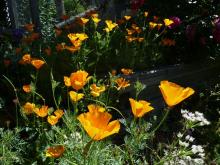
Schier (not verified)
Re: An indispensible annual
Mon, 08/08/2011 - 12:33pmLori, I too always have a "flock" of California poppies, and I love them! I really do have quite a thing for poppies, and many of them being annuals. Another annual that I hate to be without - on top of the stone foundation of the homestead house, is Phacelia
campanularia, this year however I only found 2 plants! I must fling a little more seed this fall...
Lori S. (not verified)
Re: An indispensible annual
Mon, 08/08/2011 - 12:40pmOh, I like that one too, Faith! Those blues can be just luminous in certain lights.
auspoppies (not verified)
Re: An indispensible annual
Mon, 07/02/2012 - 6:39amFantastic poppies would you like to exchange to expand you poppy collections please contact me for a list.
Regards James
Margaret Young
Re: An indispensible annual
Wed, 07/04/2012 - 1:04pmI'm not familiar with these, Lori, what are they?
John P. Weiser
Re: An indispensible annual
Wed, 07/04/2012 - 1:42pmThey are annual dryland daisies in the genus Layia. There are fourteen species last time I checked but with the way the Asteraceae are being rearranged who knows.
Here are two species I grow.
From the Great Basin, central California and Desert Southwest we find the white Layia glandulosa
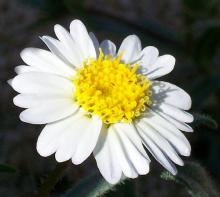
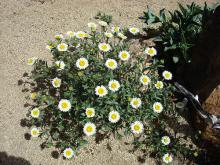
From Central California and the Desert Southwest we fine one of the yellow and white species, Layia platyglossa
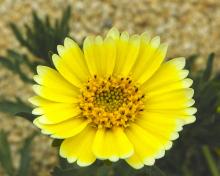

Mark McDonough
Re: An indispensible annual
Wed, 07/04/2012 - 5:20pmAs usual, great photos John. Here are some more links on these two annuals:
Layia platyglossa, Tidy Tips
http://en.wikipedia.org/wiki/File:Layia_platyglossa_Tidy-Tips!_(hortulus)_001.jpg
Centaurea cyanus, Bachelors Buttons, Cornflower
http://en.wikipedia.org/wiki/Cornflower
Non-native distribution of Centaurea cyanus in North America:
http://plants.usda.gov/java/profile?symbol=CECY2&mapType=nativity&photoI...
Bachelors Buttons are one of my first annuals grown, and still a favorite. The color range includes some good reds, clear pinks, and a dark maroon.
http://www.smartkitchen.com/resources/ingredients/vegetables/flowers/oth...
Margaret Young
Re: An indispensible annual
Thu, 07/05/2012 - 2:18pmThank you, John and Mark.
Smart and cheery things those Tidy Tips.
I know the double form of Ranunculus aconitifolius by the name Bachelors' Buttons, so to see it applied to a Cornflower was a surprise. I expect there are other "button like flowers that have attracted that name too in other places.
Lori S. (not verified)
Re: An indispensible annual
Fri, 07/06/2012 - 6:15pmWhat all are you growing, James? Love to see photos!
cohan (not verified)
Re: An indispensible annual
Tue, 07/17/2012 - 11:21pmI'm a latecomer to this thread, but many lovely things- I like the idea of native and native/wild-looking annuals that gently seed themselves around the garden, and most of those shown here are lovely! Love the red poppies, Mark's bluecurls and the ex-Cleome, and the Layia is very nice - as well as all of John's desert annuals- I've looked at a number on Alplains' lists, but have been waiting to have a more established set of beds before getting any...
I don't think I currently have any annuals, but some biennials (I think many native annuals are biennials in this short summer climate)- Geranium bicknellii, Corydalis aurea ( I think this will soon be in every bed I have, but its easy to remove unwanted plants) and working on establishing its cousin Capnoides sempervirens, Androsace septentrionalis, and some non-native Violas here and there..
For those of you who have frequented SRGC forum, you may remember Simon in Bulgaria had some very sweet little annuals around the garden..
I'm still trying to envision Jane's exotic weed free world! (not to mention bug-free!) I wouldn't mind much if I only had to pull out native seedlings (the native plants are all around, so hardly surprising) even though it would still be extensive work, but add the agriculture related weeds and it is pretty steady work, with no chance of every getting any kind of final result- my aim is control, not elimination: I don't even worry that much about bits of root, of course I pull out as much as I can, but getting rid of every bit of weed root wouldn't make that much difference, they will be back via seed within weeks if not days,..